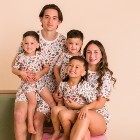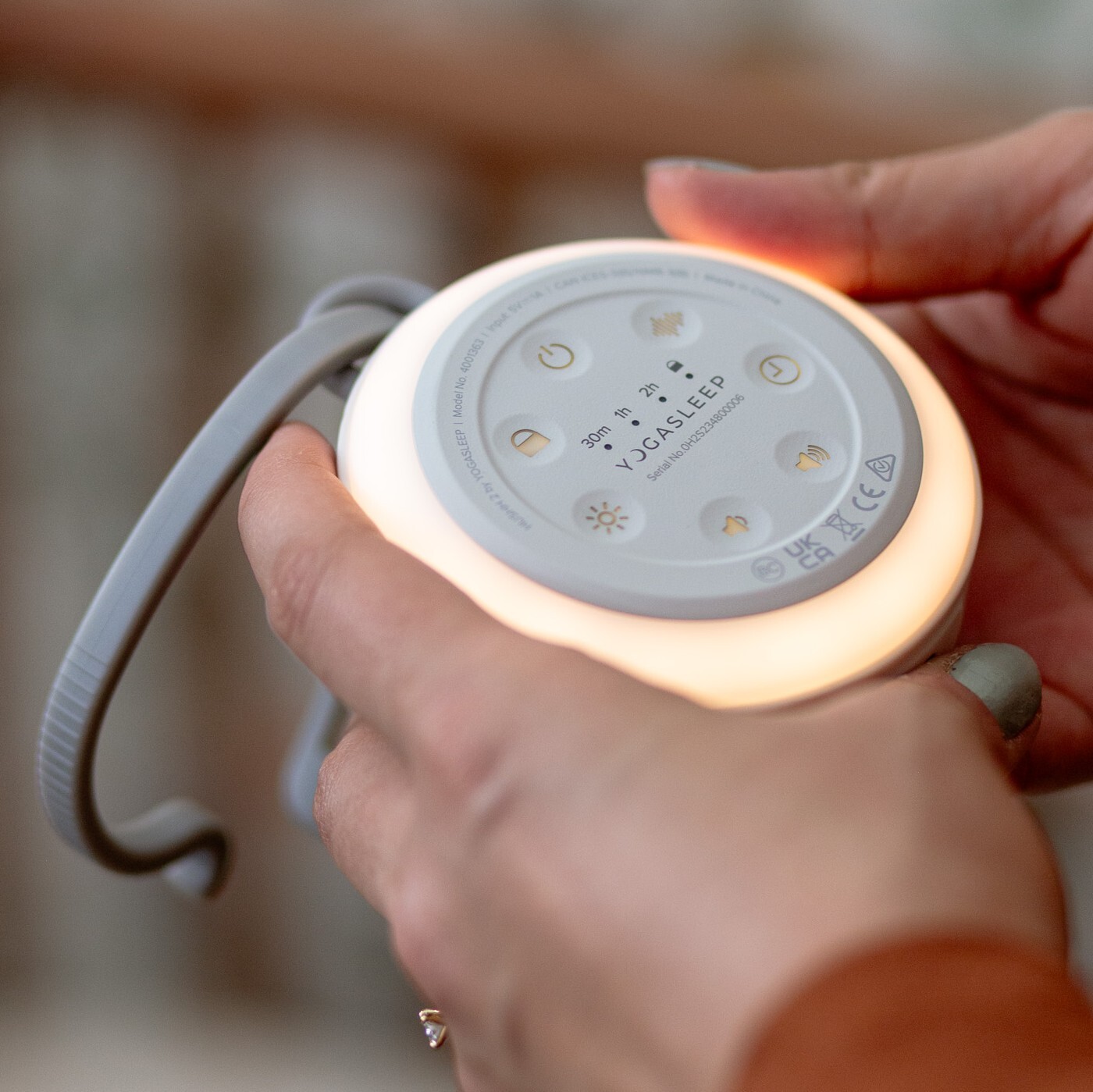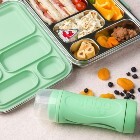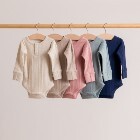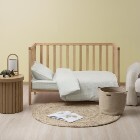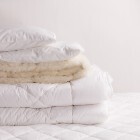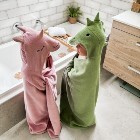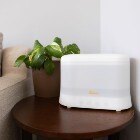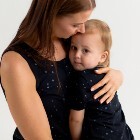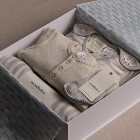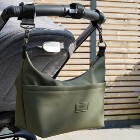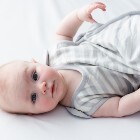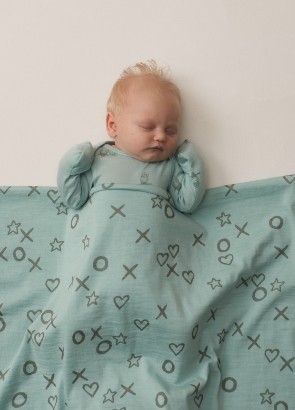If you're going to be swaddling your baby, choose wraps should that are 100% natural fibre - either cotton, merino, muslin or bamboo. Do not use a swaddling wrap that's lined with fleece when your baby is asleep, as your baby is too small to regulate their own temperature and can easily get too hot inside tight fitting fleece. Overheating is another risk factor for SUDI, so it's important to be aware of the fibres you're dressing baby in and how many layers they're wearing. If you find baby is getting cold at night you could add an extra blanket over the swaddle, ensuring it's firmly tucked in under the mattress and no higher than baby's chest.
Once you are no longer swaddling, we recommend using a sleeping bag rather than traditional bedding. This means there is no loose bedding for baby to slip underneath and it is easier to keep your baby at a consistent temperature all night as a sleeping bag can't be kicked off. A sleeping bag can also be more cost effective if you choose the right style and size as you won't need so many sheets and blankets.
If you do want to stick with traditional bedding (sheets and blankets) for your baby, we strongly recommend you only use natural fibre bedding (merino or cotton) on your baby's bed. Babies are not able to regulate their own temperature and in particular, merino wool has been found to be the best option for baby's bedding due to it's breathability and ability to wick moisture away.
For newborns, choose cotton or wool blankets, and 100% cotton or muslin sheets. Look for light layers so you can easily add additional layers if baby feels cold, rather than a heavy single blanket. Heavy blankets can increase the risk of SUDI if they come up over baby's head.
Choose blankets which will fit the size of the co-sleeper or cot your are using, ensuring you can securely tuck them into the side of the mattress. Read how to make up your baby's bed safely. We also recommend you place baby with their feet right at the end of the cot to stop baby from wriggling down the bed. It's also a good idea to choose machine washable bedding!
We don't recommend you use duvets inside your baby's cot until they are over 1 year old. Duvets are easy for baby to pull over their face, not designed to be tucked in securely so that baby can't slip down underneath. Duvets are also often made from synthetic material which can cause overheating. Resist the temptation to buy a cute matching duvet and bumper set for your newborn, they are just not a safe option until at least 1 year old!

